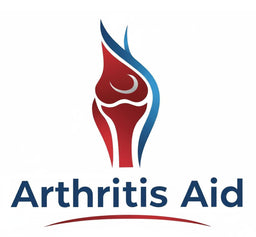Rheumatoid arthritis, a chronic condition affecting millions, often prompts questions about its nature and effects. This autoimmune disorder occurs when the immune system mistakenly attacks the body’s own tissues, causing ongoing pain and potential damage beyond just the joints. In this blog post, we’ll explore the core aspects of rheumatoid arthritis, providing clear insights to help you understand what it involves and how it impacts daily life. For those with rheumatoid arthritis, our online arthritis store offers tools like adaptive kitchen tools for arthritis and hand exercise tools for arthritis to simplify daily tasks.
Defining Rheumatoid Arthritis
Rheumatoid arthritis is an autoimmune disease that primarily triggers inflammation in the lining of joints, leading to pain, swelling, and stiffness. Unlike osteoarthritis, which results from joint wear and tear, rheumatoid arthritis targets the synovial membrane and can erode bone and cartilage over time. It typically affects multiple joints symmetrically, such as both hands or knees, and may involve organs like the skin, eyes, or lungs. The condition often begins in smaller joints, like those in the fingers or toes, before advancing to larger ones if untreated. Over time, this can cause irreversible joint damage and deformities.
Recognizing the Symptoms
People with rheumatoid arthritis often experience painful, warm, and swollen joints, along with stiffness that worsens after rest or in the morning. This stiffness can persist for an hour or more. Other signs include fatigue, fever, and loss of appetite. Rheumatoid arthritis typically starts in small joints, like those in the hands or feet, and progresses to areas like wrists or ankles, usually affecting both sides of the body. Symptoms may fluctuate, with intense periods called flares alternating with calmer phases known as remissions. In advanced cases, joints may deform, showing changes like finger deviations or restricted movement in shoulders and hips. Some individuals notice intermittent symptoms early on, which may later develop into full rheumatoid arthritis.
Exploring Causes and Risk Factors
The exact cause of rheumatoid arthritis is unknown, but it likely stems from a blend of genetics and environmental triggers. Certain gene variations, particularly in HLA genes, affect how the immune system identifies threats, potentially leading to self-attack. Factors like infections, smoking, or stress may initiate this response. Hormones and specific viruses could also contribute, especially in those genetically predisposed. Smoking is a major preventable risk, increasing both the likelihood and severity of rheumatoid arthritis, particularly in those with certain antibodies. Other risks include obesity, which slightly elevates the odds, and a family history of rheumatoid arthritis, which increases susceptibility. Women are more likely to develop rheumatoid arthritis than men, and onset often occurs in middle age, though it can strike at any age. Additional factors include exposure to dust like silica, gum disease, and gut microbiome imbalances. Diets high in calories but low in healthy fats may also heighten risk.
How Diagnosis Works
Diagnosing rheumatoid arthritis involves a specialist assessing symptoms, medical history, and test results. Blood tests check for inflammation markers and specific proteins like rheumatoid factor or anti-CCP antibodies. Imaging, such as X-rays or MRIs, can reveal joint erosion or inflammation. No single test confirms rheumatoid arthritis, so a comprehensive evaluation is essential, sometimes requiring ongoing monitoring. Joint fluid analysis may assess cell counts and protein levels. Early detection is critical, as persistent joint problems should prompt a medical visit. Standardized criteria from groups like the ACR/EULAR guide diagnosis.
Approaches to Treatment
Managing rheumatoid arthritis focuses on reducing pain, controlling inflammation, and preventing further joint damage to improve function. Medications include pain relievers and steroids for quick relief, alongside immune-modifying drugs to slow disease progression. Biologic therapies target specific immune pathways for more tailored treatment. Combining treatments often works better than a single approach. In severe cases, surgeries like joint repairs or replacements may be needed. Recent drug advancements have expanded options, helping many achieve better symptom control. Tools for rheumatoid arthritis, such as arthritis tools for hands or kitchen tools for those with rheumatoid arthritis, can also support daily activities—check our store for options.
Potential Complications
If untreated, rheumatoid arthritis can weaken bones, increasing fracture risk, especially with certain medications. Firm nodules may form near pressure points, and dryness in the eyes or mouth can occur. Rheumatoid arthritis raises susceptibility to infections and may affect organs like the heart or lungs. Some experience blood disorders, such as anemia or an enlarged spleen.
Strategies for Prevention
While genetic factors can’t be changed, you can lower risks by avoiding smoking, maintaining a healthy weight, and eating a balanced diet rich in anti-inflammatory nutrients. Managing gum health and reducing exposure to pollutants may also help.
In conclusion, understanding rheumatoid arthritis empowers those affected to seek timely care and manage it effectively. If you notice symptoms, consult a healthcare provider for tailored advice. Explore our arthritis store for tools like gripping tools for arthritis or adaptive writing tools for arthritis to make life easier. Stay proactive for better health!
Sources: Cleveland Clinic, NHS, Mayo Clinic, NCBI Bookshelf



























